Wind turbines foundation design is an art (and a job) by itself. Here you have a very quick overview of the process for shallow foundation (Patrick & Henderson foundation, widely used in the USA, follow a totally different approach) .
The inputs for the foundation design are the result of the geological survey and the design loads.
The geological survey gives the structural engineer key parameters to define the soil: internal friction angle, cohesion, density, Young modulus, shear modulus, etc. The number and type of parameters will depend on the type of materials below the foundation: expansive clay will need different test compared to sand or rock.
Design loads are provided by the manufacturer of the WTG, who has standard documents with the different type of loads (usually available data includes operational loads, extreme normal loads and extreme abnormal loads, together with fatigue calculation data).
Numerous codes, national laws and international standard are used in the design process. These are the most commonly used:
- Guidelines for Design of Wind Turbines, DNV/Risø. 2002.
- IEC-61400-1 Wind turbines – Design requirements (International Electrotechnical Commission)
- Germanischer Lloyd Guideline for the Certification of Wind Turbines, Edition 2010
- CFMS. Recommandations sur la conception, le calcul, l’exécution et le contrôle des fondations d’éoliennes (2001)
- ASCE-AWEA_Recommended practice for compliance of large onshore wind turbine support structures (Draft)
- Building Code Requirements for Structural Concrete (ACI 318M-08)
- Eurocodes
- Local laws, standard, norms.
Following the IEC-61400, the design load cases used to verify the structural integrity of a wind turbine shall be calculated by combining:
- Normal design situations and appropriate normal or extreme external conditions;
- Fault design situations and appropriate external conditions;
- Transportation, installation and maintenance design situations and appropriate external conditions.
The design load cases must be analyzed at fatigue (F) or at ultimate loads (U). Ultimate loads are defined as normal (N), abnormal (A) or transport and erection.
Several load combination are checked: for every ULS (ultimate limit state) and SLS (serviceability limit state) the correct partial factor is used, to diminish stabilizing forces and incrementing destabilizing forces. The same load type can have a different partial load safety factor, depending on the verification made. For instance, in the case of overall stability, the bending moment at the tower base has a factor of 1.35 for normal loads and 1.1 for abnormal loads.
Partial safety factors are defined by the IEC as:
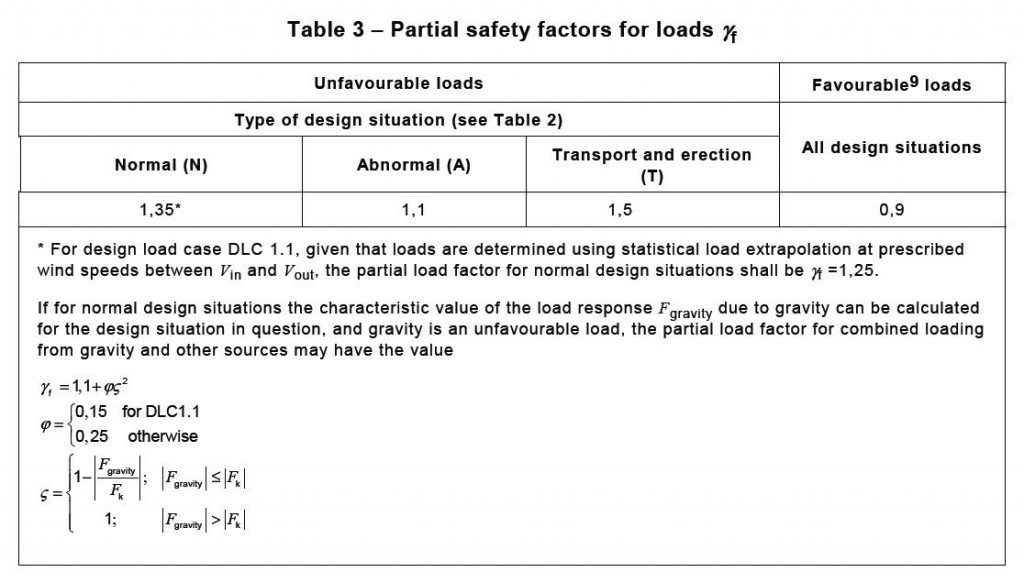 Seismic loads must be analyzed separately and they are normally combined with the turbine operational loads. It is of critical importance to recognize that seismic plus operational loads may in some cases govern the tower and foundation design.
Seismic loads must be analyzed separately and they are normally combined with the turbine operational loads. It is of critical importance to recognize that seismic plus operational loads may in some cases govern the tower and foundation design.
The main requirements to be satisfied are:
- Not to exceed the bearing capacity of the soil: the soil pressure must be lower than the allowable bearing pressure.
- Not to overturn (i.e. there is no rotation around the edge)
- Not to slide (i.e. there is no horizontal movement)
- Not to exceed the maximum differential settlement provided by the manufacturer during the life of the structure (normally few millimeters/m). The differential settlements are normally calculated using a finite elements models software, simulating the composition of the different layers of materials below the foundation.
- To comply with the minimum dynamic rotational stiffness given by the manufacturer (to limit the potential coupling phenomena with the rotating parts of the WTG).
- The compressed area below the foundation is normally assumed to be 100% for operational load and at least 50% for other loads cases.
The first step is to define a tentative geometry: than, if the various checks are satisfied (overturn, slide, bearing capacity, etc.) a detailed analysis with a finite elements software is made, to define the amount of reinforcement needed: from nodal stress distribution along the most unfavorable positions of the cross section, necessary mechanic capacity is calculated,and the amount of steel (mechanical capacity) necessary to withstand the calculated stresses is compared with the amount of steel placed in the section. Clearly, the first must be lower than the second.
Soil reaction transmitted to the foundation is modeled with vertical non linear springs
The calculation can sometimes lead to the conclusion that a shallow foundation is not feasible, due to low bearing capacity, insufficient rotational stiffness or many other possible factors. In these cases, a soil improvement is made or a deep (piled) foundation is calculated. These alternative solution are normally quite expensive: depending on the country and the technology needed, the extra cost can vary from 50% to 100% and more.
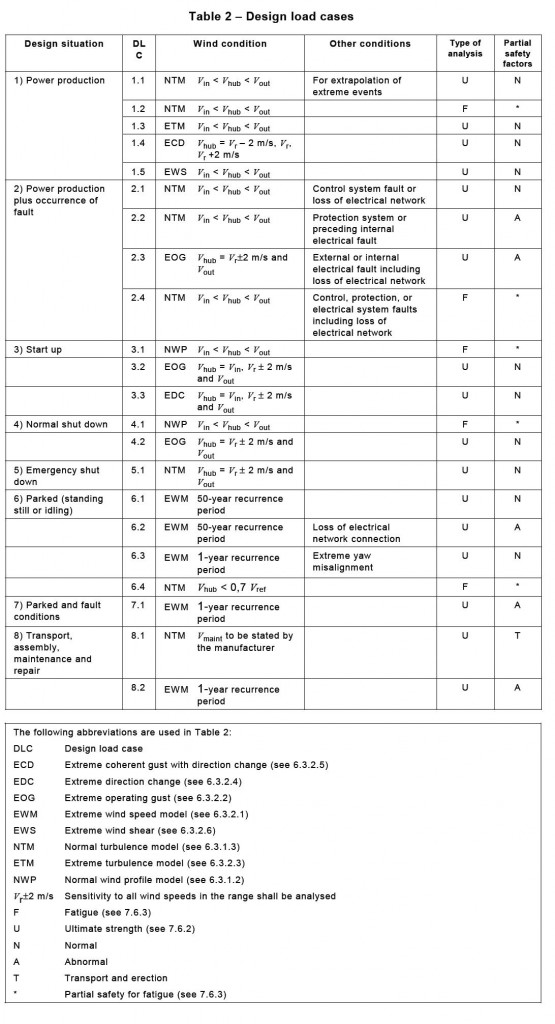
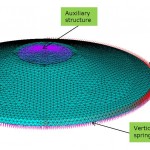
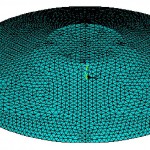
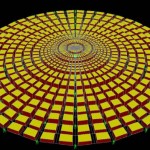
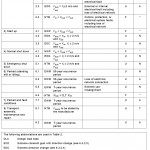
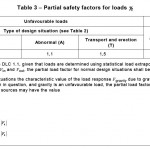
Leave a Reply